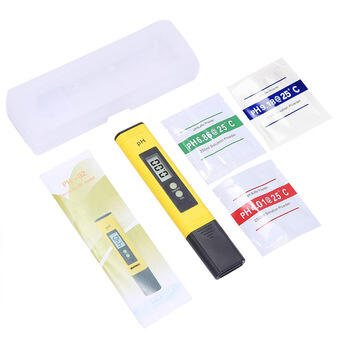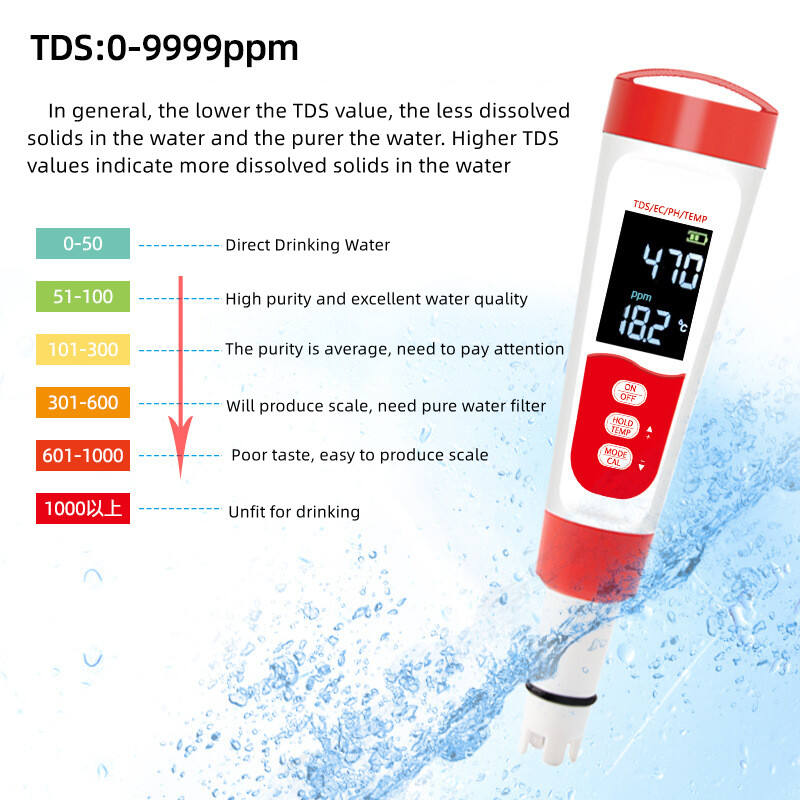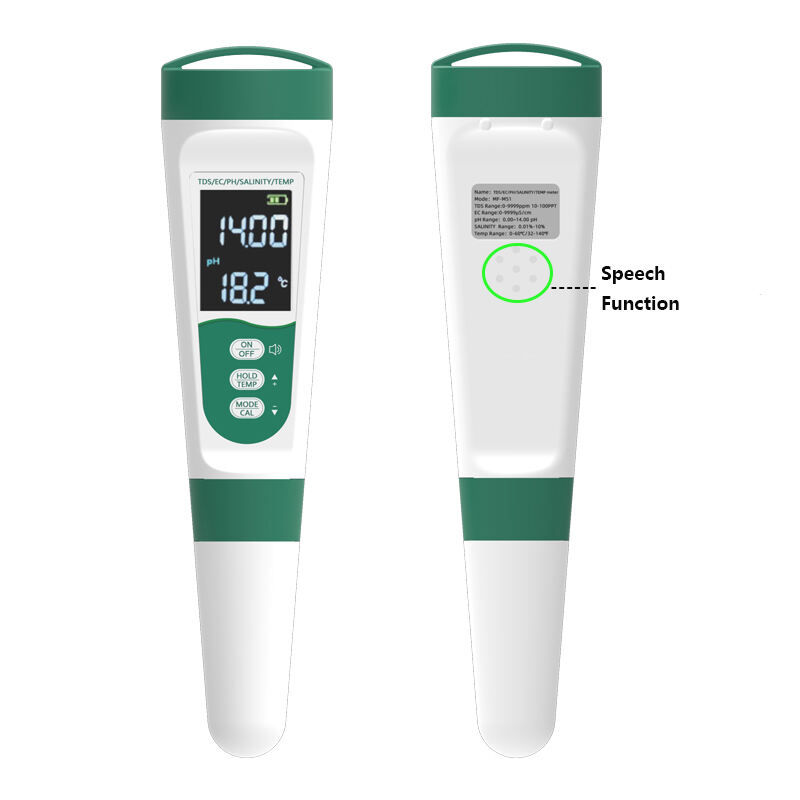ec et tds
EC (Electrical Conductivity) et TDS (Total Dissolved Solids) sunt instrumenta mensura essentialia quae in variis industriis et applicationibus utuntur. Haec instrumenta simul operantur ut informationem crucialem de qualitate aquae et contento minerali praebent. EC mensurat capacitatem aquae ad conductum electricum, quod directe coniungitur cum concentrazione ionum dissolutorum praesentium. TDS, mensuratum in partibus per milionem (ppm) aut milligrammis per litrum (mg/L), repraesentat totam quantitatem substantiarum dissolutarum in aqua. Relatio inter EC et TDS est fundamentalis, nam lectio EC converti potest in valores TDS usque ad factor conversionis. Huiusmodi apparata saepe praebent indicia digitalia, capacitatem compensationis temperaturae, et functiones calibrandi automatis. Illa latissime in hydroponica, agricultura, piscicultura, installationibus tractatus aquae, et contextibus laboratorii utuntur. Meters moderni EC et TDS saepe includunt features avances tales ut loggato data, connectivitate wireless, et integratione smartphone, eos reddentes instrumenta inestimabilia tam professionalibus quam hobbyistis qui accurate et consistentiter parametras qualitatis aquae monere necesse habent.


